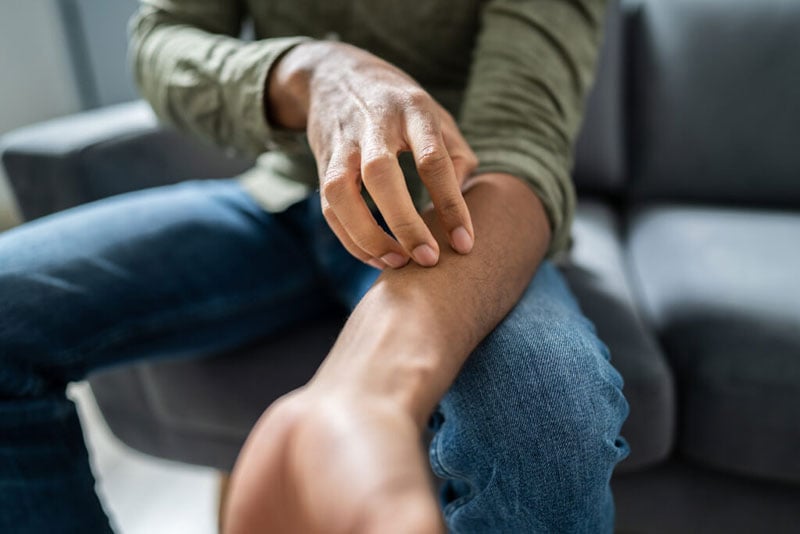Keratosis Pilaris and Dry Skin on Butt: Causes and Solutions
Keratosis pilaris and dry skin on the butt can be a frustrating combination for many individuals, especially those seeking smooth and flawless skin. As a beautician, understanding these conditions is crucial to providing effective solutions for your clients. In this article, we will delve into the causes, symptoms, and treatments of keratosis pilaris and dry skin on the buttocks, helping you offer the best advice and care.

What is Keratosis Pilaris?
Keratosis pilaris is a common skin condition that causes rough patches and small, acne-like bumps on the skin. These bumps are usually found on the arms, thighs, cheeks, and buttocks. They are caused by a buildup of keratin, a protein that protects the skin from infections and harmful substances. When keratin clogs the hair follicles, it leads to the characteristic bumps of keratosis pilaris.
Learn more about keratosis pilaris from the NHS.
Causes of Dry Skin on the Butt
Dry skin on the butt can result from various factors, including environmental influences, lifestyle choices, and underlying skin conditions. Low humidity, excessive bathing, and harsh soaps can strip the skin of its natural moisture, leading to dryness. Additionally, sitting for prolonged periods can exacerbate the condition by reducing circulation and trapping sweat against the skin.
Identifying Symptoms
Clients with keratosis pilaris often complain of rough, bumpy skin on their buttocks, which may sometimes be itchy or red. Dry skin on the buttocks, on the other hand, is typically characterized by flakiness, itching, and a tight feeling. By recognizing these symptoms, beauticians can tailor their treatments to address both conditions effectively.
Treating Keratosis Pilaris and Dry Skin
Treatment for keratosis pilaris and dry skin on the buttocks often involves a combination of exfoliation, moisturizing, and lifestyle adjustments. Regular exfoliation helps remove dead skin cells and unclog pores, while moisturizing keeps the skin hydrated and supple. Using gentle, hydrating cleansers and applying thick, emollient-rich creams can make a significant difference.
For more tips on treating these conditions, check out this article on keratosis pilaris vs butt acne.
Professional Treatments and Home Remedies
Beauticians can offer professional treatments such as chemical peels and microdermabrasion to help clients manage keratosis pilaris and dry skin. These procedures can effectively exfoliate the skin and promote cell turnover, reducing the appearance of bumps and dryness. Additionally, recommending home remedies like oatmeal baths or coconut oil can provide clients with soothing, natural options for managing their skin conditions.
For a deeper insight into managing full-body breakouts, you might find this guide on full-body breakouts helpful.
Preventative Measures
Preventing keratosis pilaris and dry skin on the buttocks involves maintaining a consistent skincare routine and making lifestyle changes. Encourage clients to avoid long, hot showers and harsh soaps, and to incorporate a daily moisturizing routine. Wearing breathable fabrics and avoiding prolonged sitting can also help prevent irritation and dryness.
To understand more about the link between environmental factors and skin conditions, you can visit this post about acne from dirty gym equipment.
Myths and Misconceptions
Many misconceptions surround keratosis pilaris and dry skin, leading to confusion and ineffective treatments. It's important to debunk myths, such as the idea that these conditions can be cured overnight or that they only affect teenagers. Educating clients about the chronic nature of keratosis pilaris and the importance of a long-term skincare regimen can foster realistic expectations and adherence to treatment plans.
For more detailed information on whether keratosis pilaris is common on the buttocks, read this insightful article.
Conclusion
As a beautician, your role in helping clients manage keratosis pilaris and dry skin on the buttocks is invaluable. By understanding the causes, symptoms, treatments, and preventative measures, you can provide effective solutions and support to those struggling with these conditions. Remember, educating clients and setting realistic expectations are key to successful skincare management.

FAQs
What causes keratosis pilaris?
Keratosis pilaris is caused by a buildup of keratin that clogs hair follicles, leading to rough, bumpy skin.
How can I prevent dry skin on my butt?
Prevent dry skin by moisturizing regularly, using gentle cleansers, and avoiding harsh soaps and hot showers.
What treatments are available for keratosis pilaris?
Treatments include exfoliation, moisturizing, and professional procedures like chemical peels and microdermabrasion.

